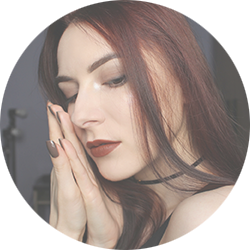







Welcome Back
Sign in to be closer to your community!
Follow other divas, like and comment
on their posts, message them, and see
who loved your posts!
Invalid username or password
You have not verified your account by clicking on the link we sent you via email. Please check your email folders (including your Spam folder) and click on the verify link sent.
Email is required
Password is required








Join FashionPotluck.com
Create your own profile in order to create content, follow other divas and like their posts, use our own messenger, and be a part of a growing international women community!
WELCOME TO OUR COMMUNITY
Fashion Potluck -
the first social media
platform for women.
You are free to read/watch & create content,
express your true self, and interact with others.
Join for free
Already a member? Log in here.
Purchase Alert
Dear Queen, you can only buy from one seller at the time. Please finish this purchase first in order to buy from another FP member
Comments
Please select one platform to continue
Please select one platform to continue
Please select one platform to continue
Please select one platform to continue
Please select one platform to continue
Please select one platform to continue
Please select one platform to continue
Please select one platform to continue
EDITOR APPROVED
You are wondering what is this 'Editor Approved'?
Well, this is pretty awesome! In order for the post to qualify and receive this accolade, it has to have a minimum of 700 words and two images (at least one original).
Receiving this accolade means two things: 1) Your content is amazing! Good job! 2) Your content qualifies for our monetization program. Every week two of the most read posts receive monetary rewards.
Have the badge & want to monetize your content?

LIFESTYLE

Many people experienced acne in their teenage years. Most teenagers develop annoying blackheads or papules, while some are suffering from severe types of acne like cystic acne. It’s characterized by large, deep, painful red pimples that don't go away and are formed under the skin. They often cause scarring and therefore treatment of cystic acne is more complicated than the treatment of other types of acne.
We’ve collected some interesting information about this type of acne, its causes, risk factors, and treatment options.
1. What is cystic acne?
Cystic acne is a type of acne in which deep and painful bumps, filled initially with blood, then with pus begin to form. It’s impossible to pop them as they are formed under your face and can remain for weeks or even months and can harden over time.
Cysts occur when a pore is clogged with oil, dead skin cells, or bacteria. The pore ruptures under the skin which leads to the inflammation that spreads to the surrounding tissue.
2. Treatment options for cystic acne.
It’s important to note that if a drugstore acne treatment hasn’t helped your cysts after two weeks, you need to visit a dermatologist to get another treatment plan. Also, if any pimple on your face persists for a few months, it’s wise to turn to a doctor as soon as possible, since this might be a sign of skin cancer.
Unfortunately, it’s unlikely to have improvement of cystic acne if using over-the-counter treatment options. Topical meds such as salicylic acid and benzoyl peroxide usually don’t work for these lesions since those bumps are too deep and these topical options are not able to penetrate them. Cystic acne treatment is long-term and always depends on the person’s situation.
Don’t try to pop and pick a cyst, of course, you’re actually not able to pop a bump if it’s deep, and moreover, you are likely to have scars from them. That’s why especially with cysts, resist the urge to pop them. In some cases, specialists inject the pimple with corticosteroids, as they lower inflammation and eliminate swelling within two days.
In the case of multiple cysts, the doctor might recommend starting a more long-term treatment plan that might include a prescription topical treatment such as retinoids. These chemicals are able to treat active acne. They can also help you prevent future flare-ups.
Your doctor might also recommend blue-light therapy which kills bacteria inside the pores. This treatment option might be more effective than topical options, as it works to defeat acne at the source (the bacteria). Another effective option is oral probiotics. They are able to eliminate the P. acnes bacteria that actually triggers acne.
Other oral medications, for instance, hormonal birth control pills and spironolactone, can regulate your hormone imbalance which might also be one of the causes of your acne. Keep in mind that cystic acne isn’t just a problem, it’s a condition that requires proper treatment.
3. Risk factors for cystic acne.
Some people are just more likely to develop cystic acne. Those cysts are often caused by chronic inflammation of the hair follicle and sweat gland. Also, some factors can lead to this issue like increased oil production by the sweat glands, the overgrowth of acne-causing bacteria on the skin, or hormone-related problems. These cysts often occur due to a hormonal imbalance or during long periods of stress, when your body releases a lot of cortisol.
Depending on the root cause of cystic acne, treatment options vary. In the case of hormone issues, your doctor might prescribe you hormonal birth control pills to control those hormonal spikes and prevent breakouts. Although you can’t sometimes manage every stressful situation in your life and your body’s reaction to stress, you can learn stress management and self-care strategies that work for you.
Comments
Related Posts
- What Makes Men’s Accessories Worth Investing In Today? by Ekim Fashion 0
- How to Plan Seasonal Plush Inventory Without Overbuying by Harnel Inc 0
- 6 Winter Season Reasons to See a Dermatologist ASAP by Monica Quinn 0
More Posts
- Affordable Embroidery Services | Free Design Assistance by Embroidery Designs 0
- Beyond the Hardwood: Finding the Fun in Absurd Physics Games like Basket Random by Suzanna Brown 0
- Why Cowboy Ties Are Making a Bold Fashion Comeback This Year by Rocky Mountain Western 0
Tags
Vote content out
Reason for voting this content out?
Reason for voting this content out?


 Login with Google
Login with Google Login with Twitter
Login with Twitter






 by
by
Add Comments